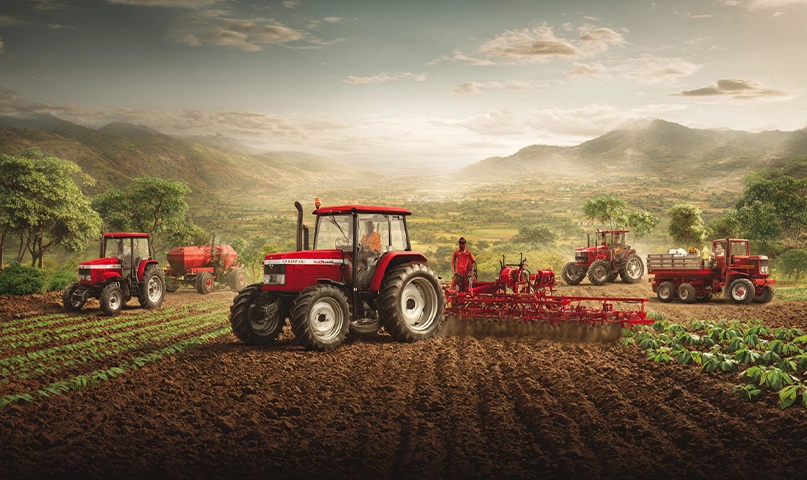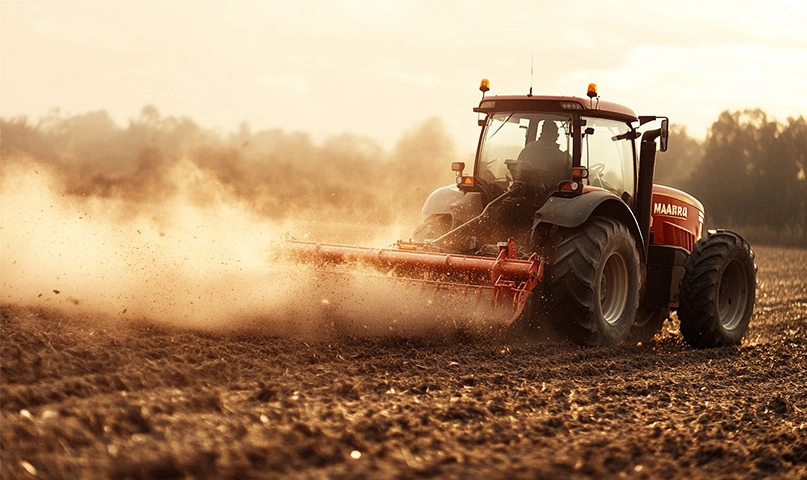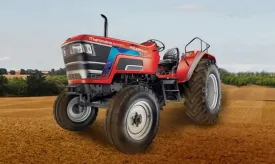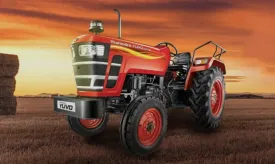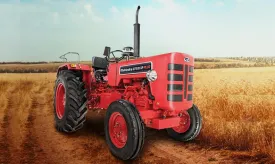How to choose the right tractor implement for your seasonal crop

Agriculture in India and around the world is no longer just about hard work — it's about smart work. With mechanization becoming the backbone of modern farming, choosing the right tractor implement for your seasonal crop is one of the most critical decisions you'll make as a farmer. From land preparation to harvesting, the right implement can significantly increase efficiency, reduce labor, save time, and improve your overall yield.
But with so many implements available — ploughs, rotavators, seed drills, sprayers, harvesters, and more — how do you know which one is right for your crop and season?
In this blog, we break down everything you need to know to make an informed decision.
1. Understand your crop cycle and seasonal needs
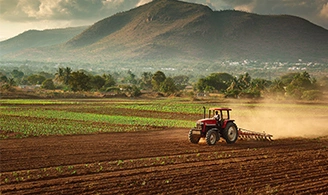
Every crop has a specific lifecycle and requires different tasks at each stage. The implements you need depend on:
- Crop type: For instance, rice requires puddling, groundnut needs deep tillage, and cotton requires precision sowing and pest management.
- Season: Kharif, Rabi, or Zaid crops have different requirements based on rainfall, temperature, and soil conditions.
- Farming operations: Ploughing, sowing, spraying, inter-cultivation, and harvesting each require different tools.
Example: A Rabi crop like wheat benefits from deep tillage using a disc plough and even seed placement via a seed-cum-fertilizer drill. In contrast, a summer vegetable crop may need lighter tillage and frequent spraying.
2. Evaluate your tractor's compatibility and power
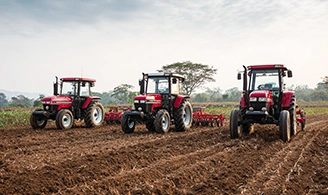
Your tractor's horsepower (HP) and PTO (Power Take-Off) capacity determine which implements it can handle. Always match the implement size and weight with your tractor's specifications.
- Up to 30 HP: Ideal for small implements like cultivators, mini rotavators, and single-bottom ploughs.
- 30–50 HP: Suitable for medium-duty implements like seed drills, small boom sprayers, and rotavators.
- 50+ HP: Can handle heavy-duty tools like reversible ploughs, mulchers, and mechanized harvesters.
Tip: Overloading a small tractor with a heavy implement can reduce fuel efficiency, damage equipment, and decrease productivity.
3. Select implements based on soil and terrain
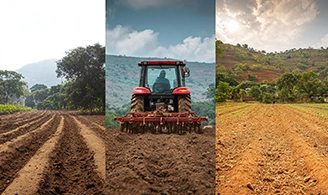
Your soil type and terrain significantly impact the effectiveness of implements:
- Clay or black soil: Requires robust equipment like disc harrows or rotavators with deep penetration.
- Sandy soil: Needs lighter tillage tools to avoid over-pulverization.
- Hilly terrain: Requires compact, maneuverable implements that work well on slopes.
Example: In regions like Vidarbha or Karnataka, groundnut farmers use Mahindra Gyrovators with curved blades suited for hard, red soil.
4. Focus on multipurpose and seasonally adaptive implements
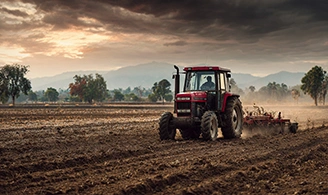
Investing in multi-crop or multi-season implements can help you maximize returns and reduce equipment costs.
- Rotavators can be used in all seasons for multiple crops — wheat, cotton, maize, sugarcane.
- Seed-cum-fertilizer drills work for pulses, cereals, and oilseeds.
- Boom Sprayers can be used throughout the season for various crops to apply fertilizers and pesticides.
This flexibility is especially valuable for small and marginal farmers who grow 2–3 different crops per year.
5. Consider operational cost and maintenance
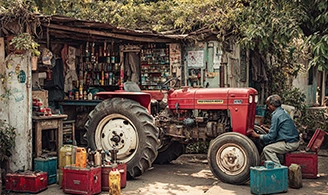
A low-cost implement may not always be economical in the long run. Look for:
- Durability and build quality: Will it last multiple seasons?
- Ease of maintenance: Are parts available locally?
- Fuel consumption: Is it energy-efficient?
Example: Mahindra implements are designed for rugged Indian conditions, offering high durability, simple maintenance, and nationwide service availability.
6. Leverage new technologies and precision farming tools

Modern implements now come with smart features such as:
- GPS-guided sowing and spraying
- Adjustable depth and spacing controls
- Hydraulic lifting for variable field conditions
These tools help improve accuracy, reduce chemical use, and enhance yield — especially useful in high-value crops like cotton, vegetables, and fruits.
7. Think about labor availability and time constraints
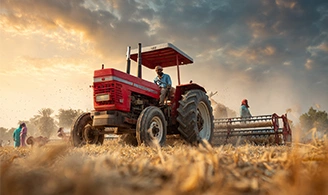
In peak season, labor shortages can impact farming schedules. Mechanized implements help reduce dependence on manual labor.
- Use mechanical harvesters for crops like paddy, wheat, and sugarcane.
- Power weeders and rotary tillers save time and effort during inter-cultivation.
Benefit: Faster operations allow you to complete sowing or harvesting within the ideal window, ensuring better crop outcomes.
8. Seek local advice and on-ground demonstrations
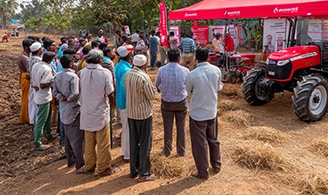
Your local agro-dealer or Krishi Vigyan Kendra (KVK) often conducts field demonstrations of implements. Attend these events to:
- See the implement in action
- Understand its performance in your local soil
- Interact with fellow farmers using the equipment
Also, check with your tractor brand (like Mahindra) for demo days or farmer training programs.
9. Government subsidies and financing options
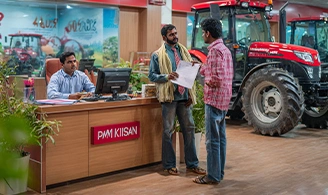
Many state governments provide subsidies on tractor implements under schemes like PM-KISAN, Sub-Mission on Agricultural Mechanization (SMAM), or state-specific agri-mechanization programs.
- You may be eligible for 40–60% subsidy on select implements.
- Tractor brands like Mahindra also offer EMI and financing through rural banks and NBFCs.
This reduces upfront cost and makes mechanization more accessible.
Conclusion
Choosing the right tractor implement is not just a purchase decision — it's a strategic investment in your farm's productivity and profitability. By considering your crop's requirements, tractor capacity, soil type, and available resources, you can select the best equipment to optimize every farming operation.
Smart mechanization is the future of seasonal crop farming — and with the right tools, you're not just farming, you're building a business.









